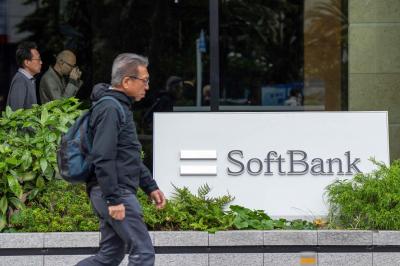It was hailed as the “great Indian retail revolution,” but a slowing economy and over-ambitious expansion have left many retailers struggling with what analysts now say were hyped expectations.
When India’s economy was booming, large domestic and foreign companies raced to tap its growing middle class and introduce Western-style chain-store shopping.
The companies hoped to exploit what was seen as one of the last virgin retail frontiers, which is dominated by small shops, but the outlook for “Big Retail” has soured as the global downturn has deepened.
“There’s belt-tightening. The country is going through a realignment of consumption patterns —- we’re not immune to the rest of the world,” said Retailers’ Association of India chief executive Kumar Rajagopalan.
The group has slashed its revenue growth forecast for the chain retail sector to 15 percent to 20 percent, down from 30 percent to 35 percent, for this fiscal year to next March but an official, who asked not to be identified, said the figure now was “anyone’s guess.”
Customer numbers are down, sales are falling and the construction of glitzy shopping malls has been put on hold.
“Everyone was being far too bullish about India,” said Bryan Roberts, global research director at London-based Planet Retail.
“Long term there’s massive potential but a lot of economic development has to take place before India can sustain this surge in retail development,” he said, adding: “There was a lot of hype.”
TOO MUCH, TOO SOON
The latest sign of trouble came this month when 600 outlets of leading Indian discount food and pharmacy retailer Subhiksha Trading Services were looted by disgruntled staff after it failed to pay wages. The retailer, which had grown at a blistering pace — expanding 10-fold to 1,655 outlets since 2006 — announced business was at a virtual standstill.
The sector has been “doing too much, too soon,” R. Subramanian, managing director of the ailing Subhiksha chain, told Business Standard newspaper. “The kind of investments and expansion that Indian retail was attempting is unprecedented.”
Foodland Fresh, a smaller Mumbai-based retail chain, recently shut 39 of its 42 outlets.
Kishore Biyani, called the “King of Retail” for pioneering chain stores in the country of 1.1 billion in the mid-1980s, has slowed his expansion plans.
Many stores are offering up to 70 percent discounts unload merchandise.
“Consumers are definitely pulling back from spending on discretionary items,” said Hemant Patel, retail analyst at Enam Securities.
Other retailers are renegotiating sky-high rents — which in Mumbai and New Delhi are among the world’s highest — to stay in business.
BALANCE SHEETS
“When we’re talking about revival of the retail scene, people are going to be working first on their balance sheets and making sure they’re profitable,” Patel said. “They’re rationalizing their rollout plans and capital expenditures.”
India’s biggest private company, Reliance Industries, has been consolidating — seeking to relocate some food stores, shut down inefficient ones and launch specialty outlets for footwear and electronics.
Reliance made headlines when it announced plans in 2006 to invest US$5 billion to set up an Indian version of Wal-Mart, the world’s largest retail chain. The aim was to blanket India with a mix of neighborhood convenience stores, supermarkets, specialty stores and hypermarkets.
But in 2007 it had to freeze plans to open its Reliance Fresh flagship food stores in Uttar Pradesh, amid bitter opposition from family-run corner stores backed by politicians.
Reliance says it has launched some 750 stores nationwide and insists it has gained “critical mass” in the market.
Analysts estimate corner stores still account for 95 percent of the retail sector, estimated to be worth an annual US$350 billion by global consultancy KPMG.
FIX FORMATS
Analysts say the big stores still have to get their model right in providing an alternative to neighborhood retailers who offer convenience, credit and personalized service.
The retailers have had “nothing but consultant reports to work on since none of them had any exposure to retail, and consultants could not figure what the issues peculiar to Indian retail were,” Subramanian said.
New Delhi housewife Supriya Soni shopped at a new mini-supermarket in the upmarket neighborhood of New Friends Colony when it opened near her home. But she went back to buying food from her local corner stores and the sabzi-wallah, or vegetable seller, who goes by her house with his wheelbarrow piled high with produce.
“It’s just more convenient, it’s not any more expensive and besides I like doing business with him — it’s more personal,” she said.
Retailers also face other hurdles —- poor supply chains that include lack of cold storage facilities, bad transport and warehouses where rats can eat the produce before consumers. Spoiled goods can be extremely costly for an industry that operates on wafer-thin margins of 2 percent to 3 percent.
British catalogue chain Argos recently exited a joint venture, saying it had not met performance targets.
Stiff regulation has also been a hurdle. To protect domestic retailers, India only allows foreign direct investment in the wholesale cash-and-carry business. In single-brand retail stores, foreign ownership is capped at 51 percent. Multi-brand international retailers are allowed but only through via franchise.
Rajagopalan said the downturn could prove a blessing in disguise: “It’s going to allow people to look at their business models, to take things a little slower, to be able to take their time about investing.”

PERSISTENT RUMORS: Nvidia’s CEO said the firm is not in talks to sell AI chips to China, but he would welcome a change in US policy barring the activity Nvidia Corp CEO Jensen Huang (黃仁勳) said his company is not in discussions to sell its Blackwell artificial intelligence (AI) chips to Chinese firms, waving off speculation it is trying to engineer a return to the world’s largest semiconductor market. Huang, who arrived in Taiwan yesterday ahead of meetings with longtime partner Taiwan Semiconductor Manufacturing Co (TSMC, 台積電), took the opportunity to clarify recent comments about the US-China AI race. The Nvidia head caused a stir in an interview this week with the Financial Times, in which he was quoted as saying “China will win” the AI race. Huang yesterday said

Japanese technology giant Softbank Group Corp said Tuesday it has sold its stake in Nvidia Corp, raising US$5.8 billion to pour into other investments. It also reported its profit nearly tripled in the first half of this fiscal year from a year earlier. Tokyo-based Softbank said it sold the stake in Silicon Vally-based Nvidia last month, a move that reflects its shift in focus to OpenAI, owner of the artificial intelligence (AI) chatbot ChatGPT. Softbank reported its profit in the April-to-September period soared to about 2.5 trillion yen (about US$13 billion). Its sales for the six month period rose 7.7 percent year-on-year

Nissan Motor Co has agreed to sell its global headquarters in Yokohama for ¥97 billion (US$630 million) to a group sponsored by Taiwanese autoparts maker Minth Group (敏實集團), as the struggling automaker seeks to shore up its financial position. The acquisition is led by a special purchase company managed by KJR Management Ltd, a Japanese real-estate unit of private equity giant KKR & Co, people familiar with the matter said. KJR said it would act as asset manager together with Mizuho Real Estate Management Co. Nissan is undergoing a broad cost-cutting campaign by eliminating jobs and shuttering plants as it grapples

MORE WEIGHT: The national weighting was raised in one index while holding steady in two others, while several companies rose or fell in prominence MSCI Inc, a global index provider, has raised Taiwan’s weighting in one of its major indices and left the country’s weighting unchanged in two other indices after a regular index review. In a statement released on Thursday, MSCI said it has upgraded Taiwan’s weighting in the MSCI All-Country World Index by 0.02 percentage points to 2.25 percent, while maintaining the weighting in the MSCI Emerging Markets Index, the most closely watched by foreign institutional investors, at 20.46 percent. Additionally, the index provider has left Taiwan’s weighting in the MSCI All-Country Asia ex-Japan Index unchanged at 23.15 percent. The latest index adjustments are to